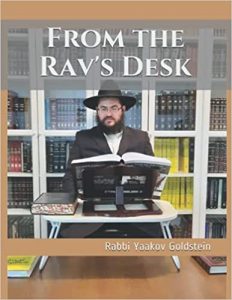

*As an Amazon Associate I earn from qualifying purchases.
What blessing is recited over cranberries such as craisins
Question:
I was eating a bag of Craisins, which are sweetened dried cranberries and I naturally recited over it a blessing of Haeitz. However, my friend then told me that the blessing is Hadama, and even showed me many websites that says that it is Hadama. What blessing should one say?
Answer:
This matter is debated amongst today’s Poskim, Rabbanim, Hashgacha agencies and Bracha lists, with some ruling that is blessing is Haeitz, and others ruling that its blessing is Hadama. Practically, in my opinion, those who follow the Alter Rebbe should recite Haeitz. The good news is, that no matter what blessing you said, everyone agrees that you have fulfilled your obligation.
Explanation:
There exists a major debate in the Rishonim and Poskim regarding the definition of a tree, for which one is to recite the blessing of Haeitz over its fruit. The core of the debate is regarding those trees that are not complete perennials and have some part of the tree die after its season of fruit, such as the branches, or trunk, or even roots. In general, due to the lack of arbitration on the matter, whenever a tree is not a complete perennial, we recite the blessing of Hadama due to the doubt. This explains the reason for why the blessing of Hadama is recited over certain fruits of a tree, such as bananas.
Now, regarding the cranberry, commercially it grows on a low bush which reaches up until 2 to 8 inches in height [between 5 to 20 cm tall]. The bush is a perennial which means that they can continuously grow crop year after year, and no part of the bush dies throughout the year, other than of course the leaves. According to the above, it would seem that the blessing of the fruit should be Haeitz according to all opinions. However, some Poskim suggest that there is an additional condition for a tree to have the definition of a tree which has its fruit be defined as Haeitz, and that is the height of the tree. They claim that if the tree is less than three Tefachim tall then it is considered a fruit of the ground and its blessing is Hadama. The Mishneh Berurah concludes that while the main opinion is that even such fruits are defined as Haeitz, nonetheless, the custom is to recite Hadama on such fruits being that they are not viewed so much as a fruit. However, the Igros Moshe disavows this claim, saying that indeed the custom is to say Haeitz.
This then is the core of the debate amongst today’s Poskim and Rabbanim regarding cranberries. Do we view cranberries as an important fruit and therefore even according to the above custom it should be Haeitz, or is the mere fact that it grows on a bush that is less than three Tefachim tall and that it is not eaten plain and raw make it nonimportant, and is therefore still subject to the above discrepancy between the main opinion and testified custom and the testimony of the Mishneh Berura versus that of the Igros Moshe.
Practically, according to the rulings of the Alter Rebbe in his Seder Birchas Hanehnin I would concord that the blessing is Haeitz, and so is the conclusion of some of the compilations of list of blessings of Chabad publications. The reason for this is because the Alter Rebbe completely ignores and omits any further condition regarding the height of the bush for it to be considered Haeitz and he makes no mention of the height of the bush as being a criteria for the blessing. Regarding those of other sects, they should ask their Rav for a Pesak on the matter.
Sources: See Shaareiy Habracha 23; Sefarim and Poskim who say cranberries is Haeitz: Yisa Yosef 2:3 [of Rav Efrati] in name of Rav Elyashiv; Madrich of Eida Hachareidis and Rabbanei Badatz of Eida Hachareidis; Hilchos Yom Beyom Brachos [Karp] 3:9; Rav Y.S. Ginzberg that Admur rules like M”A ibid and so its HaeitzLuach of Rav Marlow; Dirshu; Sefarim and Poskim who say cranberries is Hadama: Vezos Habracha p. 379 and Visein Bracha 2:249 in name of Rav SZ”A; Heichal Horah of Rav Bransdofer 2:23; of Piskeiy Teshuvos 203:3; Luach of Peruss; Luach of Gadasi; OU bracha list based on Rav Belsky See regarding the definition of a tree regarding the blessing of Haeitz versus Hadama: Seder Birchas Hanehnin 6:6-7; Admur 203:1; Rama 203:2; Tur 203; Beis Yosef 203; Brachos 40a; Rashi ibid; Rosh Brachos 6:23; Mordechai Brachos Remez 131; Ritva Brachos 1:9; Or Zarua Brachos 172; Levush 203:1-2; Chidushei Tzemach Tzedek 10:3-4; Chayeh Adam 51:9; M”B 203:3; Ketzos Hashulchan 49:6 Piskeiy Teshuvos 203:3; See regarding a bush which is less than three Tefachim: M”A 203:1; M”B 203:3 [M”A rules is Haeitz, but custom is Hadama]; Igros Moshe O.C. 1:85 [disputes claim of M”B ibid and says that in his vicinity they were accustomed like the opinion of the M”A to say Haeitz even on the fruits of low bushes]


Leave A Comment?
You must be logged in to post a comment.